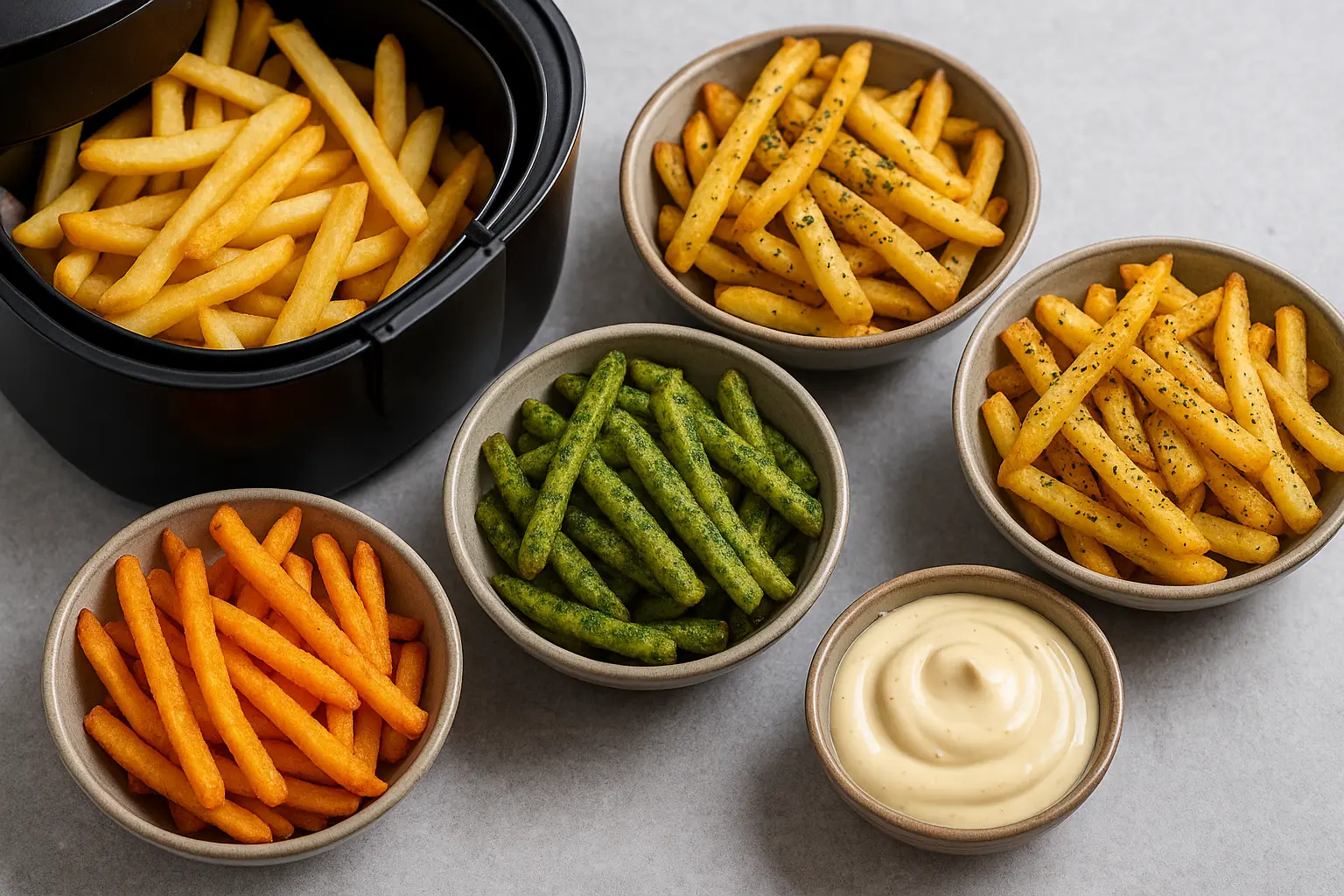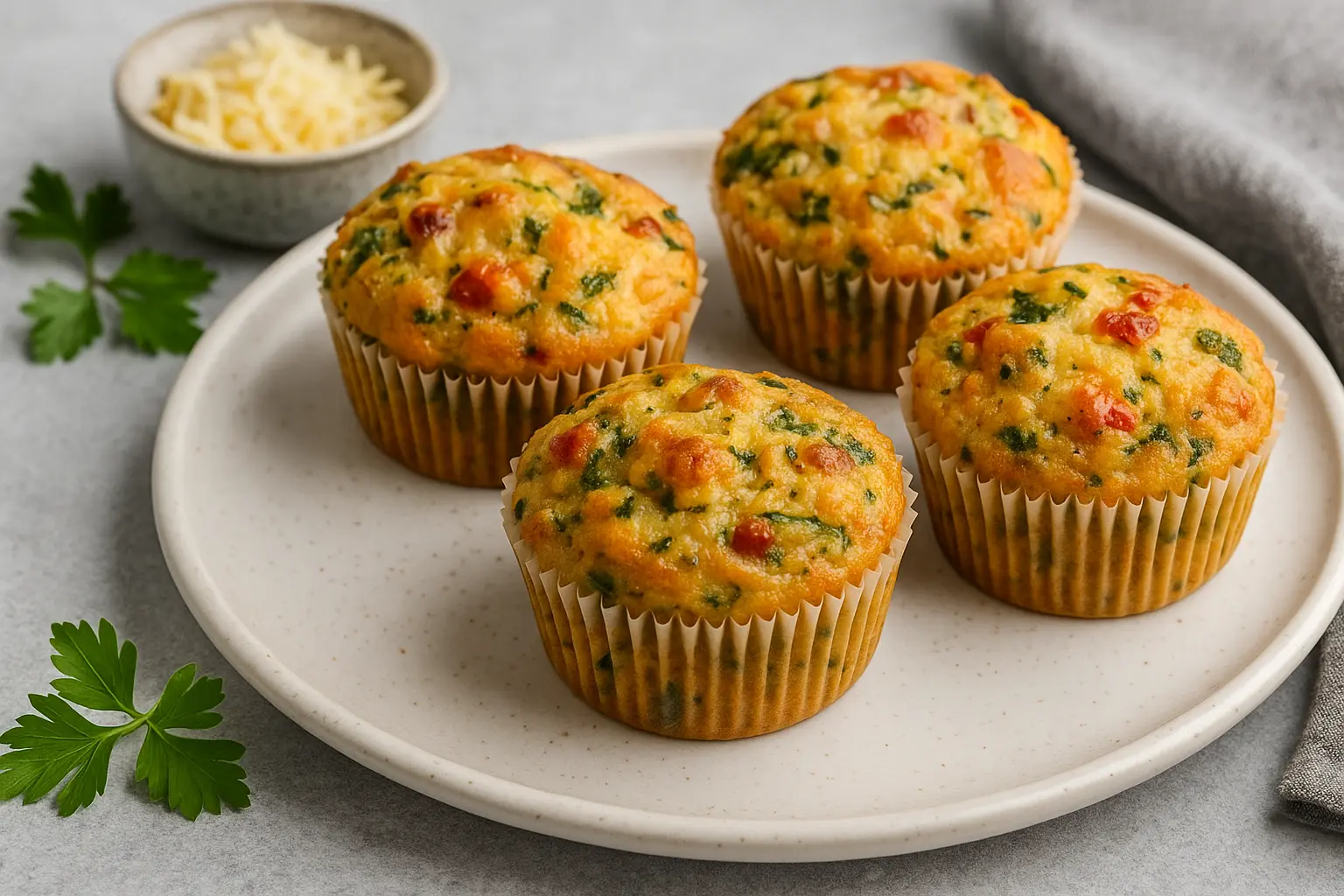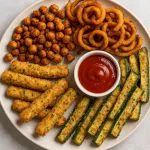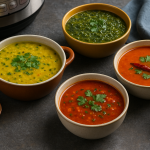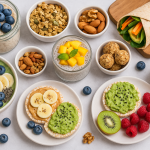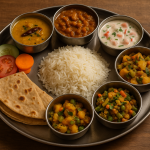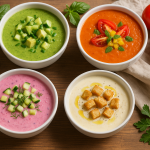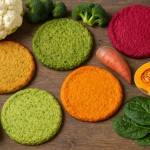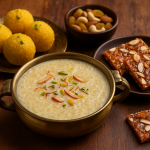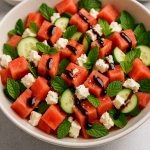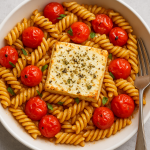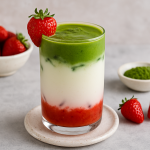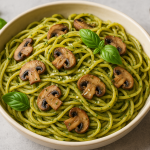Spicy Indian Pickles You Can Make at Home
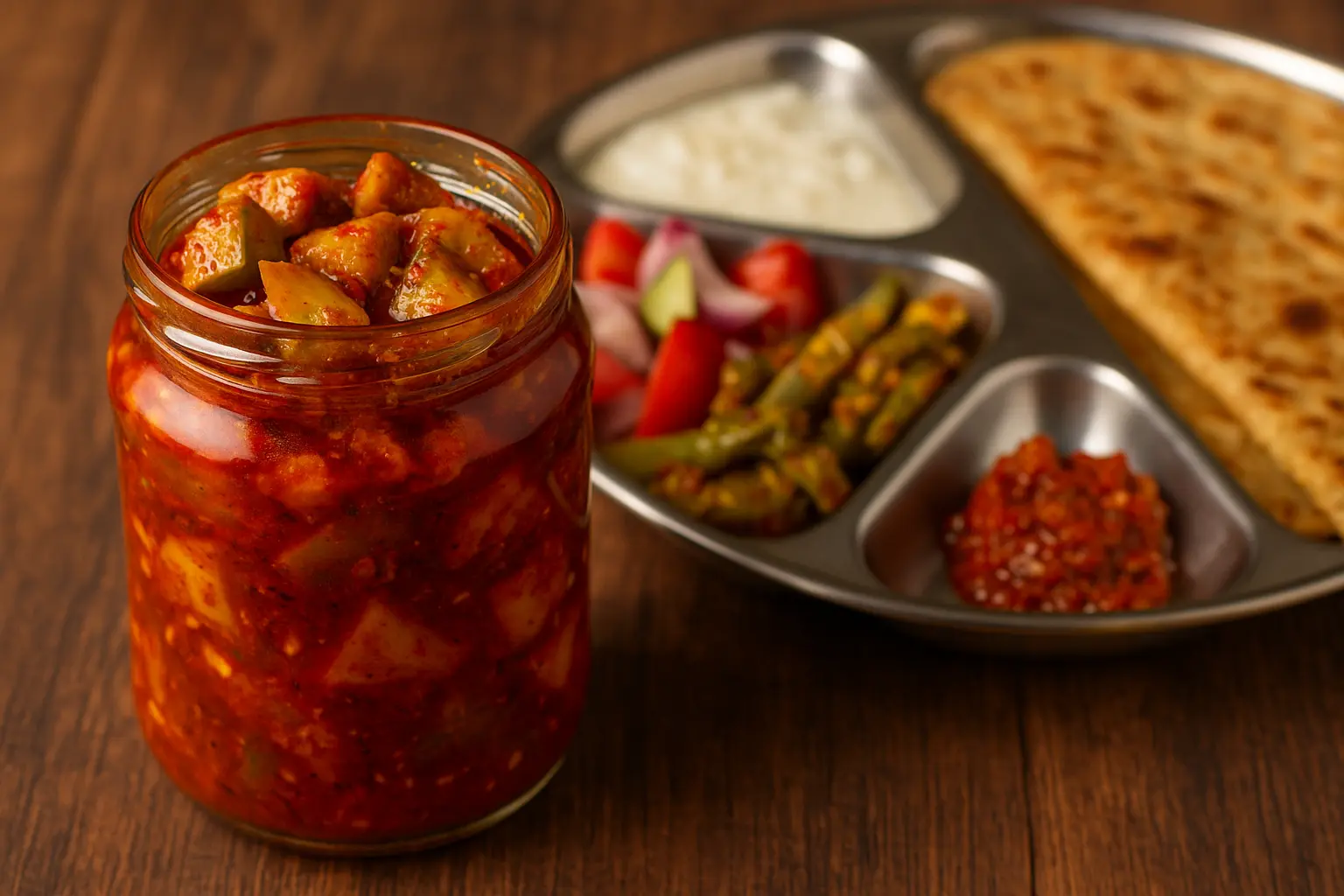
Pickles — or “achaar” as they are fondly known in India — are more than just condiments. They are flavour bombs that carry stories, tradition, regional flair, and love in every bite. Every household has its own secret recipe passed down through generations. And contrary to popular belief, making Indian pickles at home isn’t just for the experts. With the right ingredients, techniques, and a little patience, anyone can whip up a jar of spicy, tangy joy.
In this blog, we’ll explore:
The cultural essence of Indian pickles
Common ingredients and essential spices
Safety and storage tips
Step-by-step recipes for popular Indian pickles
Quick pickles for busy cooks
Tips for customising flavours
Why Are Indian Pickles So Popular?
Pickles play a vital role in Indian cuisine. Whether it’s a spoonful of mango pickle alongside dal-chawal or lime pickle paired with parathas, these spicy-sour sidekicks enhance the meal tenfold. They:
Add contrast to bland or subtle dishes
Stimulate appetite
Preserve seasonal produce
Provide digestive benefits (thanks to fermentation in some cases)
Serve as travel-friendly accompaniments
Each region in India brings a unique touch — Andhra pickles are fiery and bold, Gujarati pickles are sweet and tangy, while Kerala pickles use coconut oil and mustard seeds.
Key Ingredients Used in Indian Pickles
1. Main Vegetable/Fruit Base
Raw mangoes
Limes or lemons
Green chillies
Gooseberries (amla)
Garlic
Carrots, turnips, radishes
Ginger
Tomatoes
2. Oil
Oil not only carries flavour but also acts as a preservative. Popular choices:
Mustard oil (for North Indian and Bengali pickles)
Sesame oil (used heavily in South India)
Groundnut oil (for Gujarati and Maharashtrian pickles)
3. Spices & Seasonings
Each recipe might use a different mix, but commonly used spices include:
Mustard seeds (rai)
Fenugreek seeds (methi)
Fennel seeds (saunf)
Asafoetida (hing)
Turmeric (haldi)
Red chilli powder (degghi or Kashmiri for colour)
Salt (acts as a preservative)
Vinegar or lemon juice (for acidity and preservation)
Safety Tips for Pickling at Home
Sterilise jars properly before use to avoid mould.
Use non-reactive containers (glass or ceramic) — avoid aluminium or copper.
Always use dry utensils; moisture can lead to spoilage.
Ensure adequate oil coverage on top if the recipe calls for it.
Store in a cool, dry place or refrigerate for longer shelf life.
Label your jars with dates.
Classic Indian Pickle Recipes
Let’s now explore step-by-step recipes that are beginner-friendly yet truly authentic.
1. Spicy Mango Pickle (Aam Ka Achaar)
Ingredients:
Raw mangoes (unripe) – 500g
Mustard oil – 200ml
Salt – 3 tbsp
Turmeric powder – 1 tbsp
Red chilli powder – 2 tbsp
Fennel seeds – 1 tbsp
Fenugreek seeds – 1 tbsp
Mustard seeds – 2 tbsp
Asafoetida – ½ tsp
Steps:
Wash, dry and chop mangoes into small cubes.
Sprinkle salt and turmeric. Let it sit in sunlight for 1–2 days.
Dry roast fennel, fenugreek, and mustard seeds. Coarsely grind.
Mix all ingredients with mangoes.
Heat mustard oil till smoking, cool slightly, and pour over.
Store in a clean jar and let it sit in sun for 3–5 days before use.
2. Instant Green Chilli Pickle
Ingredients:
Green chillies – 200g
Mustard seeds – 2 tbsp
Lemon juice – 3 tbsp
Salt – to taste
Turmeric powder – ½ tsp
Mustard oil – 100ml
Steps:
Slit chillies lengthwise.
Mix all spices with lemon juice.
Heat mustard oil, let it cool a bit.
Combine chillies and oil-spice mixture in a jar.
Can be eaten in 2–3 hours, lasts up to 10 days refrigerated.
3. Lemon Pickle (Nimbu Ka Achaar)
Ingredients:
Lemons – 10
Salt – 3 tbsp
Red chilli powder – 1 tbsp
Turmeric – 1 tsp
Sugar – optional, 2 tbsp (for sweet-spicy version)
Steps:
Wash and dry lemons completely. Cut into quarters.
Mix with salt and turmeric. Let it sit for 4–5 days in sunlight.
Once softened, add red chilli powder.
Optional: Add sugar and store for a few more days.
Ready to eat after 7–10 days.
4. South Indian Style Garlic Pickle
Ingredients:
Garlic cloves – 100g
Tamarind pulp – ¼ cup
Red chilli powder – 1 tbsp
Jaggery – 2 tbsp
Sesame oil – 100ml
Mustard seeds – 1 tsp
Fenugreek seeds – ½ tsp
Asafoetida – ¼ tsp
Salt – to taste
Steps:
Fry garlic in sesame oil till golden. Remove and set aside.
In same oil, splutter mustard seeds and fenugreek.
Add tamarind pulp, jaggery, salt, and chilli powder. Simmer.
Add garlic and cook until oil separates.
Cool and store in a glass jar.
5. Punjabi Mixed Vegetable Pickle
Ingredients:
Carrots, cauliflower, turnips – 500g (cut into strips)
Mustard oil – 250ml
Mustard seeds – 3 tbsp
Red chilli powder – 1 tbsp
Turmeric – 1 tsp
Salt – 2 tbsp
Vinegar – ½ cup
Steps:
Blanch vegetables. Dry thoroughly.
Mix with all dry spices.
Heat oil, cool it, and add to mix along with vinegar.
Store for 2–3 days before use. Keeps for weeks in fridge.
Quick & Instant Pickles for Busy Lives
Short on time? Try these no-cook, under-10-minute pickles:
1. Quick Cucumber Pickle
Sliced cucumber
Vinegar
Salt
Sugar
Mustard seeds
Just mix and chill. Use within 2–3 days.
2. Tomato Thokku (South Indian Style)
Grated tomato
Mustard seeds
Oil
Curry leaves
Asafoetida
Red chilli powder
Sauté and cook till thick. Stays 1 week in fridge.
Regional Pickle Highlights Across India
| Region | Popular Pickle |
|---|---|
| Andhra Pradesh | Gongura Pickle (sorrel leaves) |
| Gujarat | Sweet mango pickle (chhundo) |
| Punjab | Shalgam (turnip) achar |
| Kerala | Lime and chilli pickle in coconut oil |
| Bengal | Tamarind or mango mustard pickle |
| Rajasthan | Ker Sangri pickle (desert berries) |
These regional favourites represent the diverse culinary geography of India. Pickles are not just condiments here — they’re culinary legacies.
Health Benefits of Traditional Indian Pickles
Aid digestion due to probiotics (especially fermented pickles)
Rich in antioxidants from spices
Natural appetite stimulants
High shelf life – perfect for preserving seasonal produce
Can be adapted to dietary needs (vegan, oil-free, low-salt versions possible)
Customisation Ideas for Pickle Lovers
Less spicy? Use Kashmiri chilli powder for colour without heat.
Oil-free version? Try lemon juice or vinegar-based recipes.
Low-salt needs? Use pink Himalayan salt and refrigerate immediately.
Add crunch? Mix in roasted peanuts or chana dal.
Storing, Serving & Pairing Suggestions
Storage:
Always use dry spoons to avoid contamination.
Refrigerate once opened if not preserved in full oil.
Use within 1–3 months, or up to a year if fully preserved.
Pairing Ideas:
Parathas and lemon pickle
Curd rice with mango pickle
Roti with mixed vegetable pickle
Plain dal-chawal and garlic pickle
Idli or dosa with tomato thokku
Final Thoughts: Bringing India’s Bold Flavours to Your Table
Homemade Indian pickles are soulful, fiery, and satisfying. Whether you’re a spice-lover, a traditionalist, or a curious foodie, there’s a pickle recipe for you. Making your own allows control over spice, salt, oil — and brings the joy of preserving your own food.
And the best part? Once you master a few recipes, you can start inventing your own blends. Add a pinch of this, a dash of that, and you’ve created your own family favourite.
So, go ahead — chop, spice, and stir up your own jar of Indian sunshine!
Leave a comment
Your email address will not be published. Required fields are marked *



